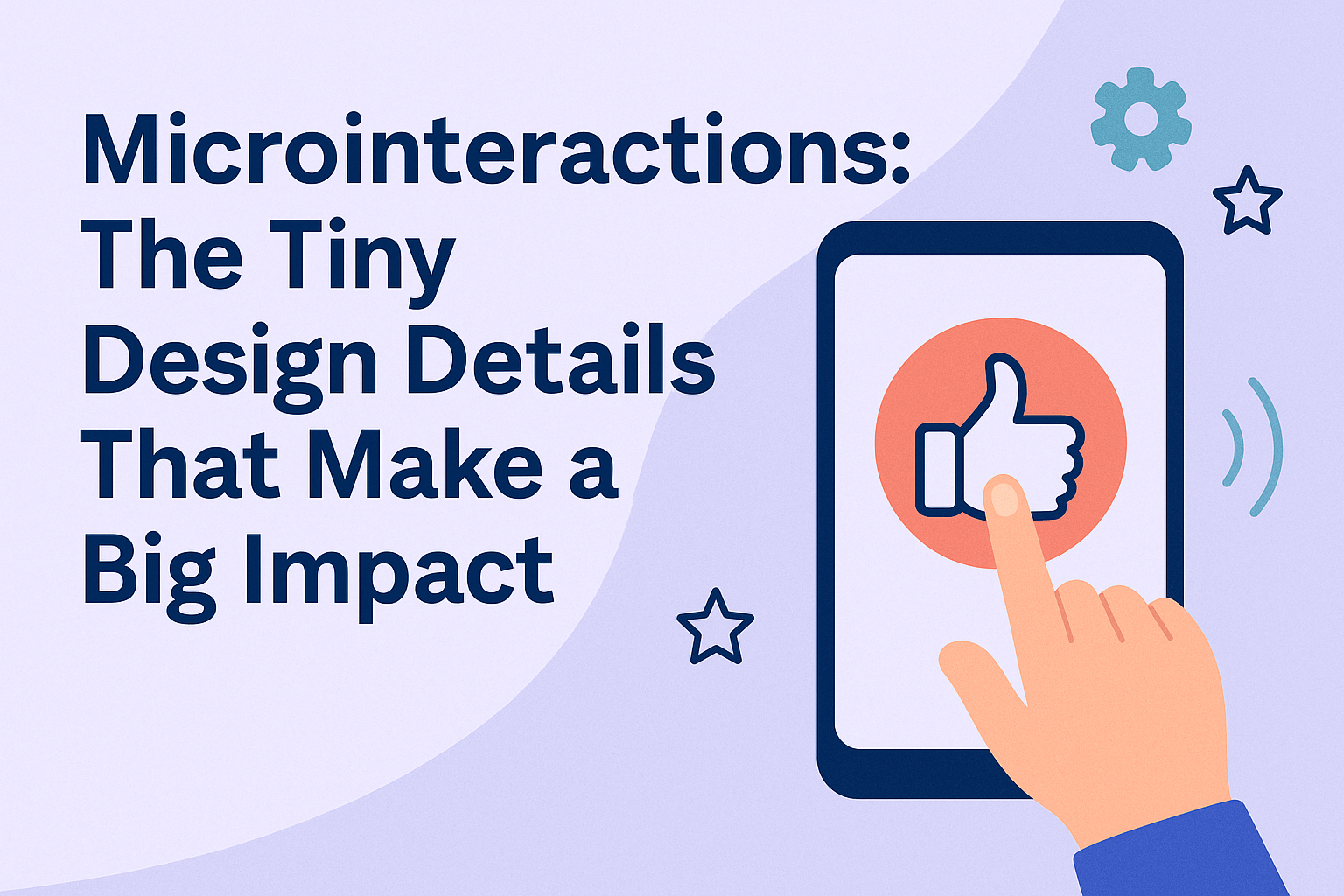Microinteractions: The Tiny Design Details That Make a Big Impact

Microinteractions: The Tiny Design Details That Make a Big Impact
In a world where user attention spans are shorter than ever, the smallest design details can make the biggest difference. Microinteractions, those subtle animations, sounds, and visual cues, are often overlooked, yet they play a crucial role in enhancing user experience, guiding behavior, and building emotional connection with a digital product.
What Are Microinteractions?
Microinteractions are single-task moments in a digital product that respond to user actions. Think of the “like” animation on Instagram, the swoosh sound when sending an email, or the pull-to-refresh icon on a mobile app. These brief, functional design elements add personality and clarity, subtly reinforcing the product’s brand identity and responsiveness.
Why Microinteractions Matter
- Enhance Usability
Microinteractions help users understand what’s happening. A button that changes color when clicked provides instant feedback, letting users know their action was successful. - Create Delight
Thoughtfully crafted animations or sounds can create emotional engagement. These details often surprise and delight users, making them more likely to return. - Encourage Habit Formation
Small cues like a ping or a badge notification can help reinforce user behavior and make interactions intuitive over time. - Reduce Friction
By providing visual or tactile feedback, microinteractions reduce uncertainty and eliminate unnecessary cognitive load.
Examples of Effective Microinteractions
- Loading animations that entertain while the system processes a request.
- Progress indicators that visually communicate task completion.
- Swipe gestures in mobile interfaces that enhance navigation.
- Interactive toggles and switches that visually mimic their physical counterparts.
Best Practices for Designing Microinteractions
- Keep it subtle. Microinteractions should enhance, not distract.
- Stay purposeful. Every microinteraction should serve a function.
- Be consistent. Align the tone and motion style with your brand.
- Design for feedback. Let users know their actions have been acknowledged.
Final Thoughts
Microinteractions may be small, but their impact on user experience is massive. They bridge the gap between static interfaces and dynamic, human-centered design, turning a simple click into a moment of connection. When thoughtfully executed, they create memorable, enjoyable, and more usable digital experiences.